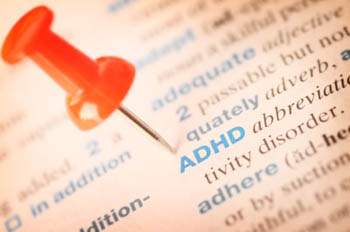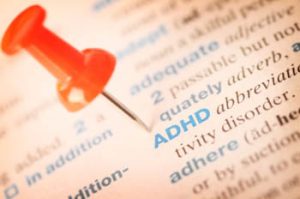
What is ADHD? An Overview – Part 1
 ADHD sometimes known as childhood hyperkinesis is a condition with symptoms of inattentiveness, over activity and impulsivity. For this host of problems to be diagnosed as ADHD, they must be out of the normal range for a child’s age and development.
ADHD sometimes known as childhood hyperkinesis is a condition with symptoms of inattentiveness, over activity and impulsivity. For this host of problems to be diagnosed as ADHD, they must be out of the normal range for a child’s age and development.
The direct causes of ADHD are unknown but it is the most commonly diagnosed behavioral disorder of childhood. It affects about 3 – 5% of school aged children. Interestingly, ADHD is diagnosed much more often in boys than in girls.
ADHD seems to run in families, but it is not clear how it is passed from generation to generation. Whatever the cause may be, it seems to be set in motion early in life as the brain is developing. Imaging studies indicate that the brains of children with ADHD are different from those of other children.
There are a number of condition such as depression, sleep disorders, learning disabilities, tics and other behavior problems that may be confused with ADHD. Every child suspected of having ADHD should be carefully examined by a doctor to rule out other conditions or reasons for the behavior that might need prior treatment.
In fact, many of the children diagnosed with ADHD show at least one other developmental or behavioral problem. At times, they may even have a psychiatric problem, such as depression or bipolar disorder.
Symptoms of ADHD
The symptoms of ADHD are separated into three main categories.
- Lack of attention or inattentiveness
- Hyperactivity
- Impulsive behavior or impulsivity
Some children with ADHD primarily have symptoms that fall mainly into one category. Others may have a combination. Those with inattentiveness symptoms alone are less disruptive to others and are more likely to not be diagnosed with ADHD.
Inattentiveness
Inattentive symptoms are described as a consistent failure to give close attention to details. The child often makes careless mistakes in schoolwork and has difficulty keeping attention during tasks or playtime. He or she does not seem to listen when spoken to directly and as a result does not follow through on instructions.
The child also has difficulty organizing tasks and activities in a sequential fashion. Tends to avoid or dislike tasks that require sustained mental effort (such as schoolwork).
Hyperactivity
Hyperactivity symptoms are persistent and disruptive. The child fidgets with his hands or feet or squirms in his seat, often getting up when remaining seated is expected. He runs about or climbs in inappropriate situations and does not seem to be able to be part of quiet play. He or she seems to be “on the go” and talks excessively and out of turn.
Impulsivity
Impulsivity can also be present when the child blurts out answers before questions have been completed and without waiting for his turn to speak. He constantly interrupts or intrudes on others by disrupting games, for instance.
It is quite difficult to arrive at a correct conclusion when it comes to ADHD. The paradox is that all too often, difficult children are incorrectly labeled with ADHD while many children who do have ADHD remain undiagnosed.
In either case, treatable learning disabilities or mood problems are often missed and the children remain untreated. To simplify the process, The American Academy of Pediatrics (AAP) has issued guidelines to bring more clarity and accuracy.
To start with, the diagnosis must be based on very specific symptoms, which must be present in more than one setting:
- Children should have no less than 6 attention symptoms and 6 hyperactivity/impulsivity symptoms. Symptoms are present before age 7.
- The symptoms present themselves for at least 6 months and are seen in two or more settings.
- The symptoms must be severe enough to interfere at home, school and with relationships with peers.
In older children, ADHD can be considered to be in partial remission when they still show symptoms but no longer meet the full criteria of the disorder.
In any case, the child should have an evaluation by a medical professional if ADHD is suspected. Evaluation may include parent and teacher questionnaires that describe the behavior in detail.
It is recommended that psychological evaluation of the child as well as the family is completed. Other developmental, mental, nutritional, physical, and psychosocial examination should be performed to better pinpoint the diagnosis.
References:
National Institute of Health, MedlinePlus. “Attention deficit hyperactivity disorder (ADHD)” http://www.nlm.nih.gov/medlineplus/ency/article/001551.htm Accessed August 30, 2011.
New York Times, Times Health Guide. “Attention Deficit Hyperactivity Disorder (ADHD)” http://health.nytimes.com/health/guides/disease/attention-deficit-hyperactivity-disorder-adhd/overview.html Accessed August 30, 2011
